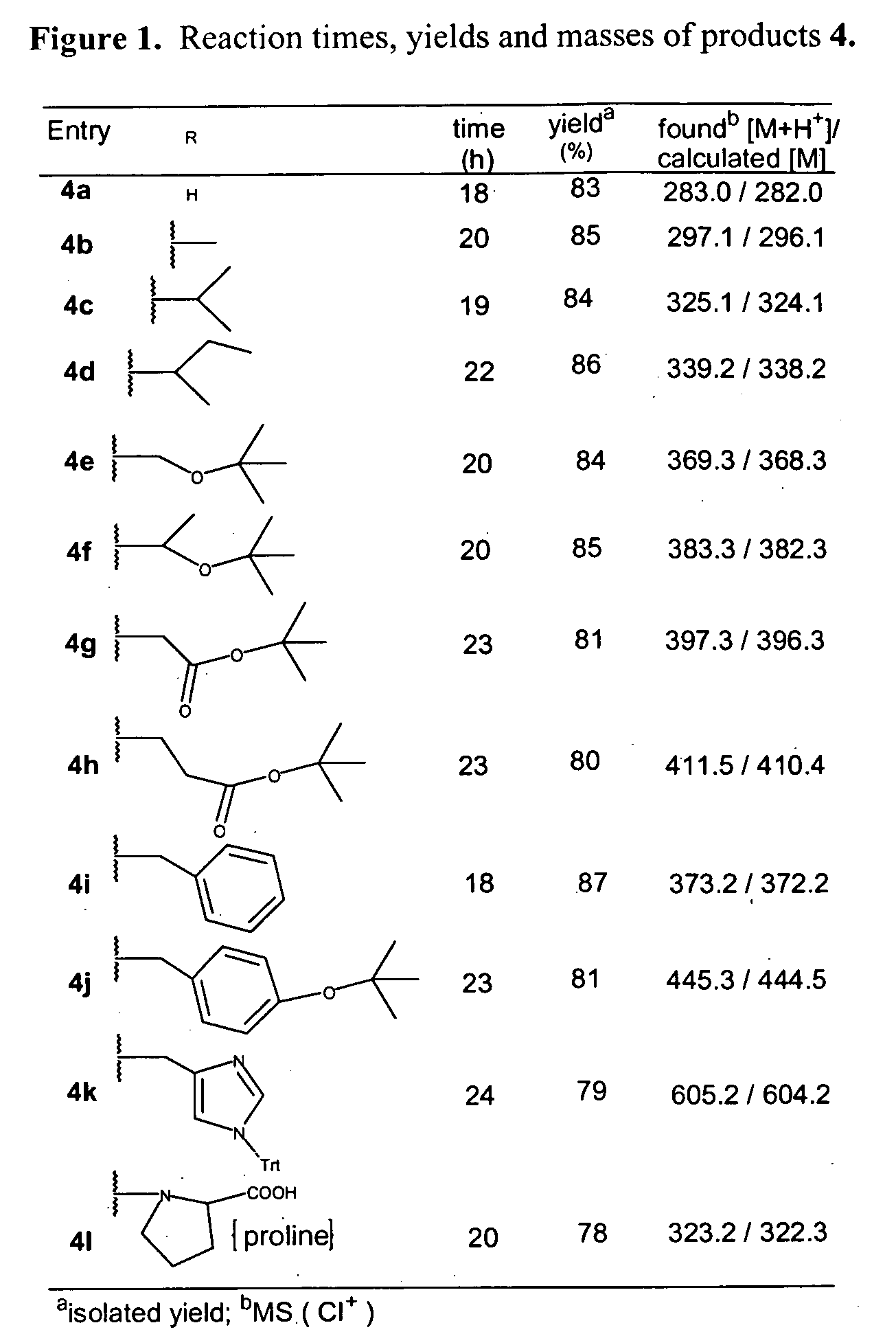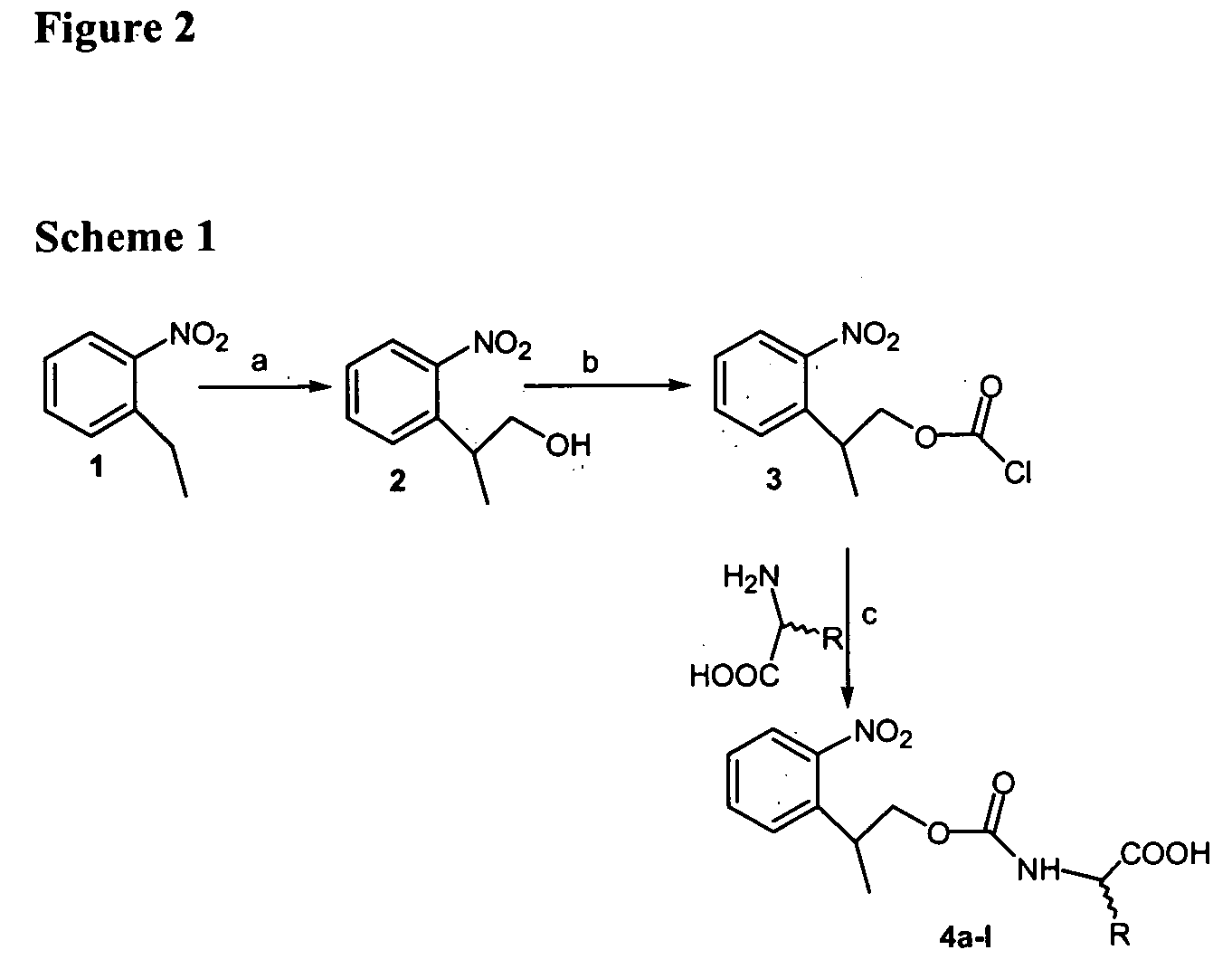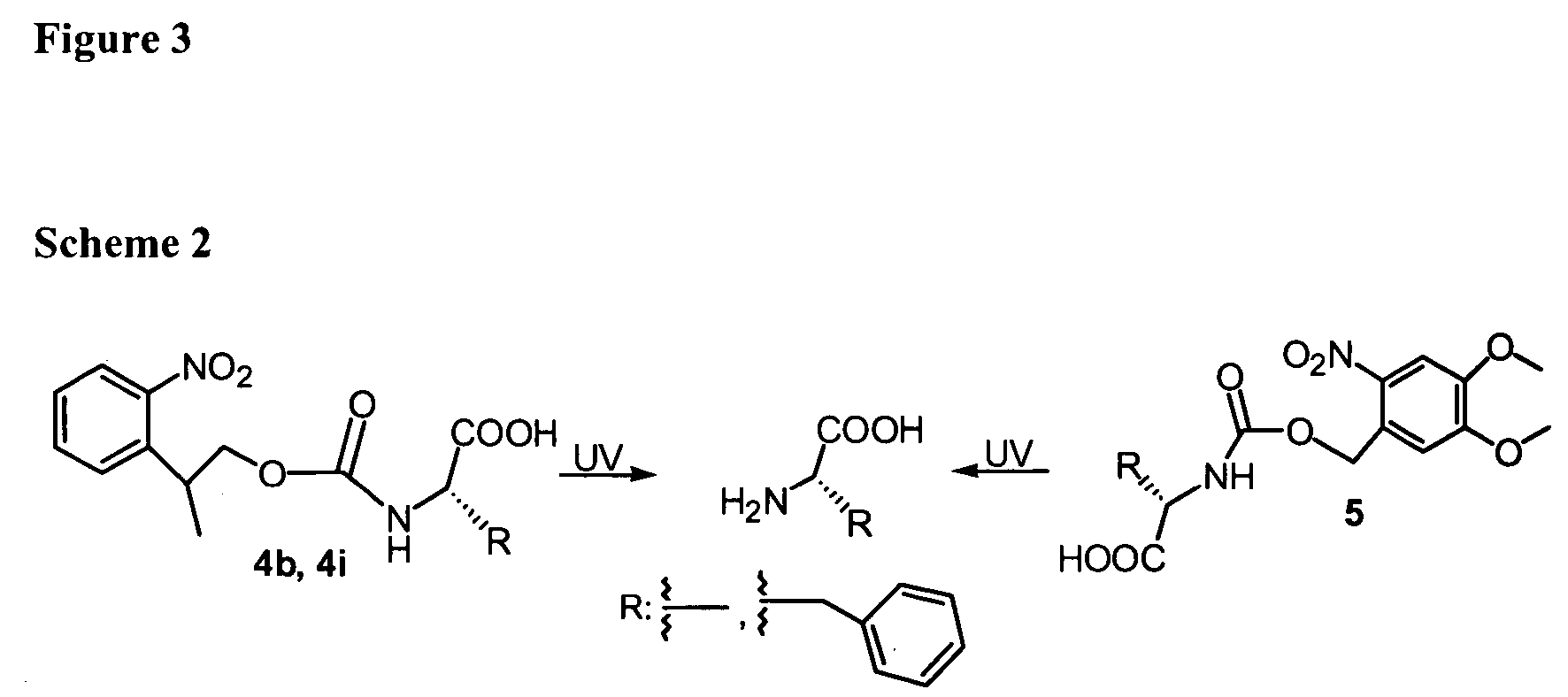Synthesis of photolabile 2-(2-nitrophenyl)propyloxycarbonyl protected amino acids
a technology of photolabile and amino acids, applied in the direction of peptides, peptide/protein ingredients, bulk chemical production, etc., can solve the problems of low quality peptide synthesis, low synthesis efficiency of photolytic removal of nvoc, and reduce stepwise synthetic yield, so as to improve amino acid building blocks and efficient synthesis of peptides
- Summary
- Abstract
- Description
- Claims
- Application Information
AI Technical Summary
Benefits of technology
Problems solved by technology
Method used
Image
Examples
examples
[0060] The following example describes the synthesis of several NPPOC-amino acids.
1. Synthesis of NPPOC-Protected Amino Acids
[0061] To obtain NPPOC-protected amino acids 4a-1 (see FIG. 1, Table 1), we first devised an improved synthesis of 2-(2-nitrophenyl)propanol 2 (of FIG. 2, scheme 1), based on the method of Tsuji et al.11 for preparation of 2-nitrophenethyl alcohol. Triton B (40% in MeOH, 8 mmol) was added to 2-ethylnitrobenzene (8 mmol) and paraformaldehyde (8.1 mmol), and the mixture was heated at reflux for 6 h. After concentration under vacuum, the reaction mixture was neutralized using 5% aqueous HCl. The mixture was extracted with ethyl acetate (3×10 mL), dried over Na2SO4 and concentrated at reduced pressure. The residue was purified by flash chromatography using hexane-ethyl acetate (4:1) to give compound 2 (96%, red oil). 1H NMR (CDCl3, 400 MHz): δ / ppm 7.73 (d, J=8.0 Hz, 1H, Ar—H), 7.56 (t, J=7.4 Hz, 1H, Ar—H), 7.48 (d, J=7.6 Hz, 1H, Ar—H), 7.35 (t, J=7.6 Hz, 1H, Ar...
PUM
| Property | Measurement | Unit |
|---|---|---|
| ring structure | aaaaa | aaaaa |
| wavelength | aaaaa | aaaaa |
| density | aaaaa | aaaaa |
Abstract
Description
Claims
Application Information
 Login to View More
Login to View More - R&D
- Intellectual Property
- Life Sciences
- Materials
- Tech Scout
- Unparalleled Data Quality
- Higher Quality Content
- 60% Fewer Hallucinations
Browse by: Latest US Patents, China's latest patents, Technical Efficacy Thesaurus, Application Domain, Technology Topic, Popular Technical Reports.
© 2025 PatSnap. All rights reserved.Legal|Privacy policy|Modern Slavery Act Transparency Statement|Sitemap|About US| Contact US: help@patsnap.com



